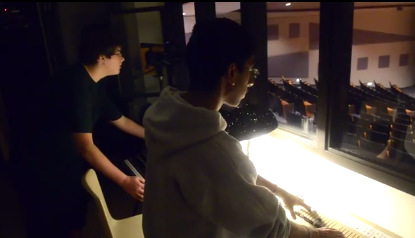Vending Machines
Behold, the IMSA mission statement.
The mission of IMSA, the world’s leading teaching and learning laboratory for imagination and inquiry, is to ignite and nurture creative, ethical, scientific minds that advance the human condition, through a system distinguished by profound questions, collaborative relationships, personalized experiential learning, global networking, generative use of technology and pioneering outreach.
But what does it all mean? Through my extensive research and pioneering methods of investigations, I have discovered that vending machines explain the IMSA mission statement perfectly.
First, vending machines provide students with 6 essential nutrients that are vital for neuron activity, including fat, sodium, sugar, and caffeine, as well as plenty of calories to sustain us through long days and all-nighters. Thus, by supplying each hall and the main building with vending machines, the Academy is able “to nurture…[our] minds” and encourage healthy sleep patterns.
Second, because the vending machines charge obscenely low prices on all of their items, we IMSA students have to consider new ways to find money, and thus our minds are more “creative”.
Third, the vending machines are so very good at dispensing items, thus testing our patience and personal ethics. If a student decides to break the windows, for example, he might receive the item that he paid for and rightfully deserves, but he would also wrong the administration of IMSA and the vending machine company. Thinking this over, he would decide that one action might result in immediate gratification, but would not benefit the good of all. In the future, he would become closer to the ideal man as described by Plato. So, by giving us more practice in assessing “ethical” situations, the vending machines are a great tool for the Academy to help students achieve higher moral character.
Fourth, for those students who absolutely want to receive the item they paid for but have determined that breaking the window is not an ethical action, they will have to be “creative…[and ] scientific” in their attempts to dislodge their item from the vending machine. To achieve this, they will ask “profound questions, [and form] collaborative relationships”. Thus the vending machines are a great example of “personalized experiential learning, global networking, generative use of technology and pioneering outreach.”
And now we know now why IMSA describes itself as “the world’s leading teaching and learning laboratory for imagination and inquiry”: because it seeks to “advance the human condition, through a system distinguished” . . . by vending machines.






Be the first to comment on "Behold, the Vending Machines"